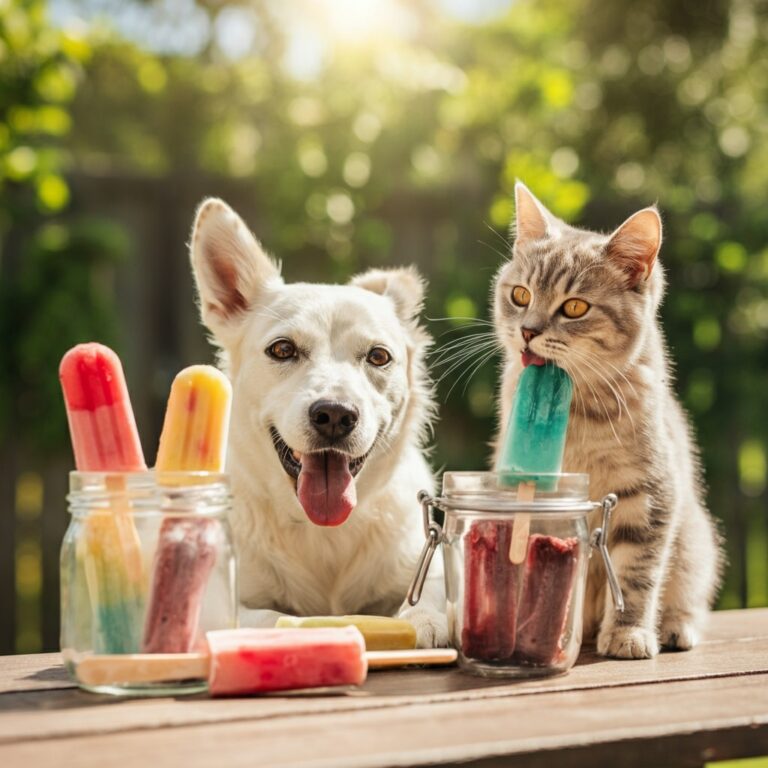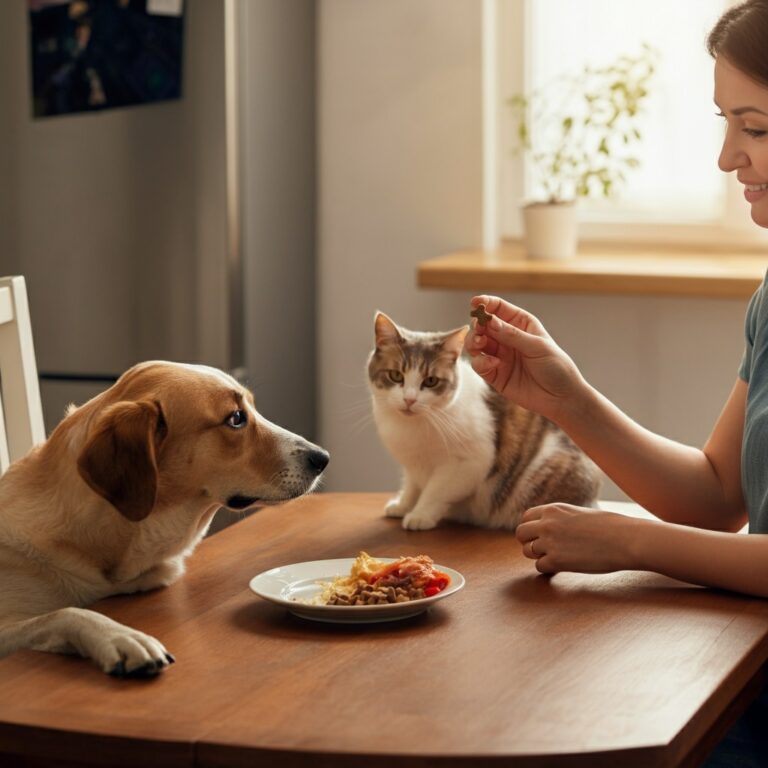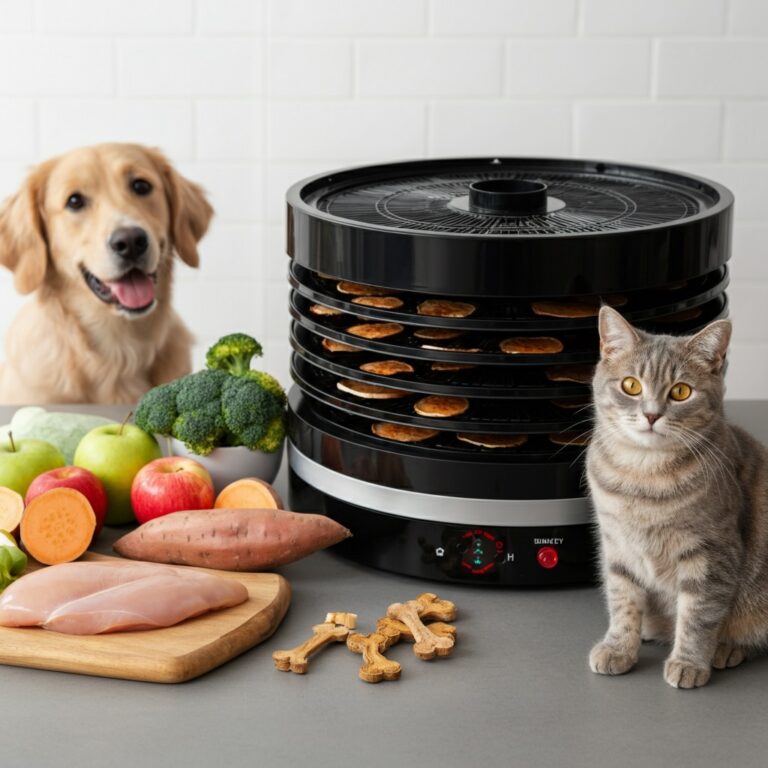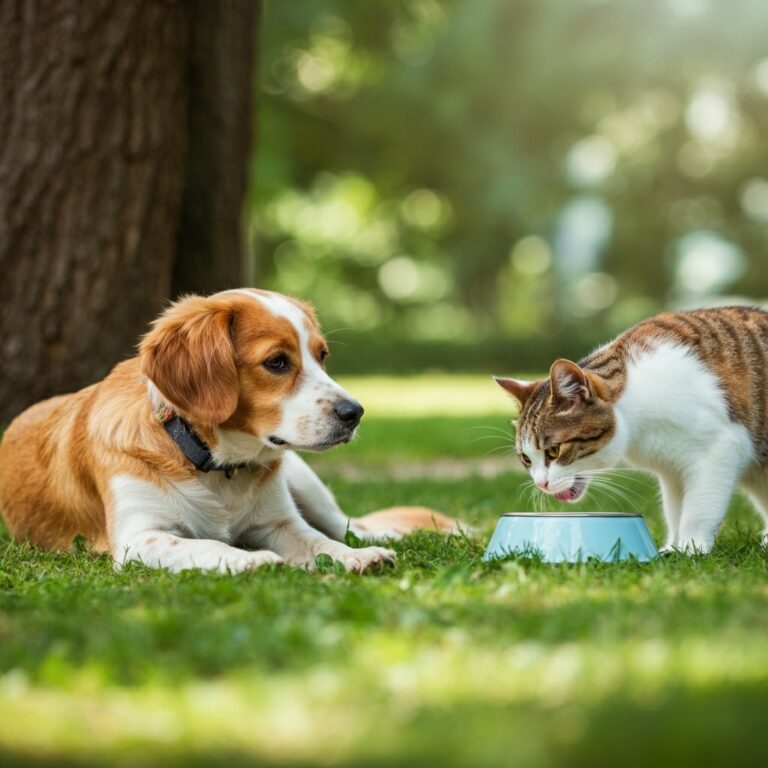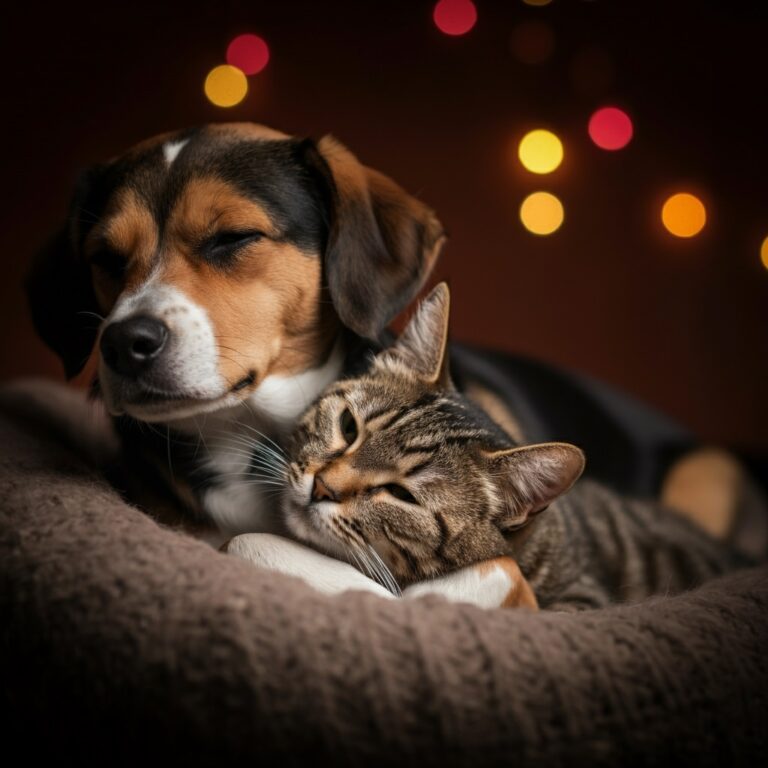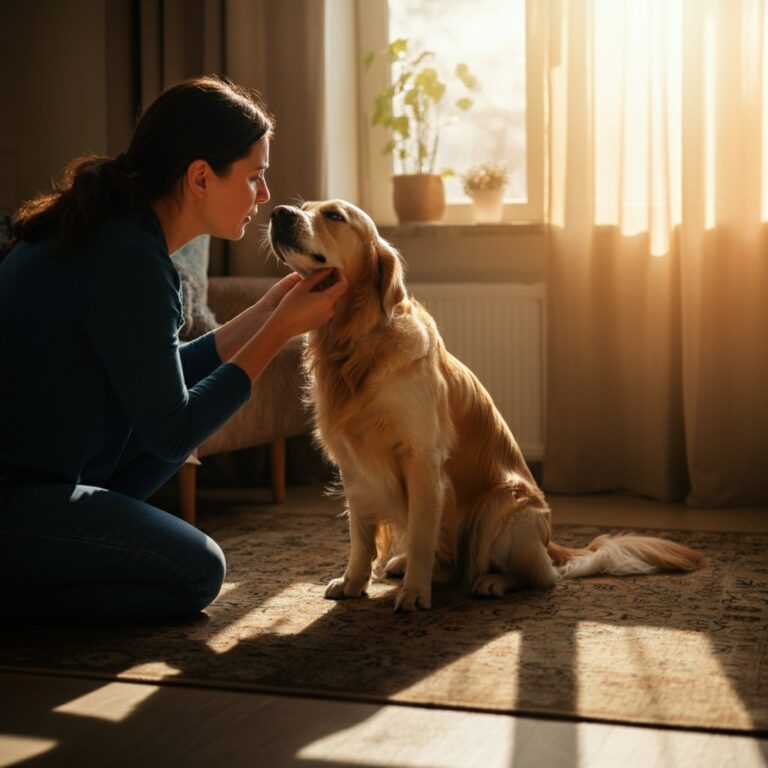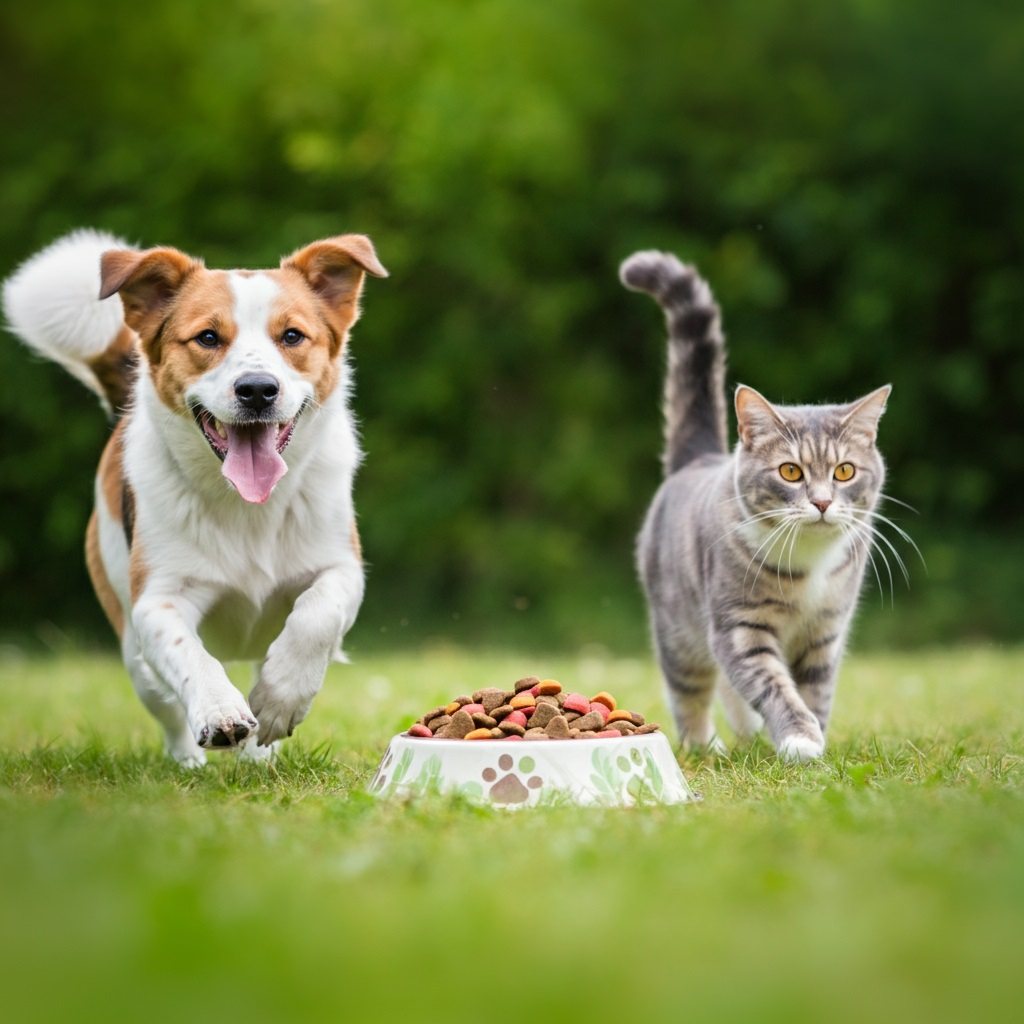
Pet obesity has reached epidemic proportions, with over 60% of cats and dogs in the United States classified as overweight or obese. If your furry friend has packed on a few extra pounds, you’re not alone in this struggle. The good news? A well-planned low-fat diet can help your pet return to a healthy weight while maintaining their energy and happiness.
Excess weight affects more than just your pet’s appearance. Overweight animals face increased risks of diabetes, heart disease, joint problems, and shortened lifespans. The path to a healthier pet starts with understanding how proper nutrition can transform their wellbeing.
This comprehensive guide explores the most effective low-fat diet options for overweight pets, helping you make informed decisions about your companion’s nutritional needs. Whether you have a chunky cat or a portly pup, you’ll discover practical strategies to support their weight loss journey safely and sustainably.
Understanding Pet Obesity and Its Impact
Before diving into diet solutions, it’s crucial to recognize the signs of an overweight pet. You should be able to feel your pet’s ribs without pressing hard, and they should have a visible waist when viewed from above. If these features are difficult to detect, your pet may be carrying excess weight.
Overweight pets face numerous health challenges. Joint stress from extra pounds can lead to arthritis and mobility issues, making exercise painful and further contributing to weight gain. Excess fat also affects organ function, particularly the heart and liver, while making pets more susceptible to heat stroke and breathing difficulties.
The emotional impact shouldn’t be overlooked either. Overweight pets often become less active and playful, missing out on the joy of running, jumping, and engaging with their families. This decreased activity creates a cycle where reduced movement leads to further weight gain.
Key Principles of Low-Fat Diets for Pets
Low-fat diets work by reducing caloric density while maintaining essential nutrients. For dogs, therapeutic weight management diets typically contain 6-10% fat on a dry matter basis, compared to 12-18% in regular adult formulas. Cats require slightly higher fat levels due to their carnivorous nature, with weight management foods containing 8-12% fat.
Protein becomes even more important during weight loss. High-quality protein helps preserve lean muscle mass while your pet loses fat, maintaining their metabolism and strength. Look for diets where protein makes up 25-30% of the formula for dogs and 35-45% for cats.
Fiber plays a supporting role by promoting satiety without adding calories. Soluble fiber helps pets feel full longer, reducing begging behaviors and making portion control easier. Many prescription weight management diets include added fiber from sources like beet pulp, cellulose, or psyllium.
Commercial Low-Fat Diet Options
Prescription Diets
Veterinary prescription diets offer the most targeted approach to pet weight loss. These scientifically formulated foods undergo extensive testing to ensure they provide complete nutrition while promoting safe weight loss.
Hill’s Prescription Diet r/d stands as one of the most popular options, featuring high fiber content and controlled calories. The formula helps pets feel satisfied while consuming fewer calories, making the weight loss process more comfortable for both pets and owners.
Royal Canin Satiety Support provides another excellent choice, utilizing a unique fiber blend that expands in the stomach to promote fullness. This diet also includes L-carnitine to help convert fat into energy during the weight loss process.
Purina Pro Plan Veterinary Diets OM features a high protein, low-fat formula that helps maintain muscle mass during weight loss. The diet includes natural fiber sources and has shown clinical success in veterinary weight management programs.
Over-the-Counter Options
While prescription diets offer the most precise approach, several high-quality over-the-counter options can support weight management when used properly.
Hill’s Science Diet Perfect Weight provides a more accessible option for pets needing moderate weight control. This formula includes natural fiber and clinically proven ingredients to help pets achieve their ideal weight.
Blue Buffalo Life Protection Formula Healthy Weight offers a natural approach with deboned chicken as the first ingredient. The formula excludes corn, wheat, and soy while providing balanced nutrition for weight management.
Wellness CORE RawRev Healthy Weight combines high-protein kibble with freeze-dried raw pieces, appealing to pets’ natural instincts while supporting weight loss goals.
Creating Homemade Low-Fat Meals
Some pet owners prefer preparing homemade meals to have complete control over ingredients and quality. However, creating nutritionally balanced homemade diets requires careful planning and veterinary guidance.
Essential Components
A successful homemade low-fat diet must include high-quality protein sources such as lean chicken breast, turkey, fish, or egg whites. Remove all visible fat and skin to minimize caloric content while preserving protein quality.
Vegetables add fiber, vitamins, and minerals without excessive calories. Green beans, carrots, broccoli, and pumpkin work well for most pets. These ingredients provide bulk to help pets feel full while contributing minimal calories to the overall diet.
Complex carbohydrates like brown rice, sweet potatoes, or quinoa provide sustained energy without the blood sugar spikes associated with simple carbohydrates. These ingredients should make up a smaller portion of the diet compared to protein and vegetables.
Sample Meal Plans
For dogs, a basic low-fat meal might include 40% lean protein, 30% vegetables, 20% complex carbohydrates, and 10% healthy additions like plain yogurt or a small amount of healthy oil for essential fatty acids.
Cats require a higher protein percentage, with successful homemade diets containing 50-60% lean protein, 20% vegetables (if accepted), and smaller amounts of carbohydrates. Many cats prefer meat-focused diets with minimal plant ingredients.
Important Considerations
Homemade diets require supplementation to ensure complete nutrition. Calcium, phosphorus, essential fatty acids, and vitamins often need to be added to maintain proper nutritional balance. Work with a veterinary nutritionist to develop appropriate recipes and supplementation protocols.
Portion control becomes critical with homemade diets since it’s easy to overfeed when preparing meals yourself. Use a kitchen scale to measure ingredients accurately and calculate total caloric content based on your pet’s weight loss goals.
Continues after advertising
Feeding Strategies for Success
The best diet in the world won’t work without proper feeding strategies. Successful weight management requires attention to timing, portions, and environmental factors that influence eating behaviors.
Portion Control Techniques
Measuring food accurately makes the difference between success and frustration. Use a kitchen scale rather than measuring cups, as the shape and size of kibble can affect volume measurements. Even a 10% error in portion size can significantly impact weight loss progress.
Divide daily food allowances into multiple smaller meals rather than one or two large portions. This approach helps maintain steady blood sugar levels, reduces hunger between meals, and can boost metabolism slightly through increased digestive activity.
Meal Timing and Frequency
Most overweight pets benefit from eating 2-3 smaller meals per day rather than free-feeding or eating one large meal. This schedule helps prevent overeating while maintaining steady energy levels throughout the day.
For households with multiple pets, separate feeding areas prevent food stealing and ensure each pet receives their appropriate portion. Some pets may require crate feeding or supervised meals to prevent competition-driven overeating.
Environmental Modifications
Slow feeder bowls or puzzle feeders can help pets eat more slowly and feel more satisfied with their meals. These tools engage natural foraging instincts while extending meal time, giving satiety signals time to develop.
Remove food bowls between meals to prevent lingering temptation. This practice also helps establish clear meal times and reduces anxiety around food availability.
Monitoring Progress and Adjusting Plans
Weight loss should occur gradually to ensure safety and sustainability. Dogs should lose 1-2% of their body weight per week, while cats should lose approximately 1-2% bi-weekly. Faster weight loss can lead to muscle loss and other health complications.
Regular weigh-ins help track progress and identify when adjustments are needed. Many veterinary clinics offer free weight checks between appointments, providing accurate measurements and professional guidance.
Body condition scoring provides additional insight beyond simple weight measurements. Even if the scale shows progress, monitoring changes in body shape and fat distribution gives a more complete picture of your pet’s improvement.
If weight loss stalls after several weeks, the diet may need adjustment. This might involve reducing portions slightly, increasing exercise, or switching to a different food formula. Never make dramatic changes without veterinary guidance.
Common Challenges and Solutions
Many pet parents encounter obstacles during their pet’s weight loss journey. Understanding these challenges and having solutions ready increases the likelihood of long-term success.
Begging behaviors often intensify when pets receive smaller portions. Combat this by establishing firm boundaries, providing non-food attention and affection, and ensuring all family members follow the same feeding rules.
Multiple pet households face unique challenges when one pet needs a special diet while others eat regular food. Solution strategies include separate feeding areas, timed feeding schedules, and potentially transitioning all pets to the weight management diet if appropriate.
Slow progress can lead to discouragement, but remember that sustainable weight loss takes time. Focus on non-scale victories like increased energy, better mobility, and improved overall health rather than just numbers on the scale.
Exercise and Activity Considerations
Diet alone rarely achieves optimal results without appropriate exercise modifications. However, overweight pets often have limited exercise tolerance and may have joint discomfort that affects their activity levels.
Start with low-impact activities that won’t strain joints or overwhelm out-of-shape pets. Short, frequent walks work better than long hikes for most overweight dogs. Swimming provides excellent exercise for pets with joint issues, as water supports body weight while providing resistance training.
Indoor activities can supplement outdoor exercise, especially for cats or during inclement weather. Laser pointers, feather wands, and interactive toys encourage movement while strengthening the human-animal bond.
Gradually increase activity levels as your pet’s fitness improves. What starts as a short walk around the block can eventually become longer adventures as your pet sheds pounds and builds endurance.
Working with Your Veterinarian
Professional veterinary guidance ensures your pet’s weight loss journey remains safe and effective. Your veterinarian can assess your pet’s overall health, identify any underlying conditions contributing to weight gain, and recommend the most appropriate diet strategy.
Regular check-ups during the weight loss process allow for monitoring of vital signs, blood work if necessary, and adjustments to the diet plan based on progress. Some pets may have medical conditions that affect their ability to lose weight or require special dietary considerations.
Veterinary nutritionists offer specialized expertise for complex cases or pets with multiple health issues. These professionals can design custom diet plans that address weight management while accommodating other medical needs.
Read More👉 Why Does My Cat Sleep So Much?
Transform Your Pet’s Health Through Proper Nutrition
Helping your overweight pet achieve a healthy weight represents one of the most impactful gifts you can provide. The journey requires patience, consistency, and often some trial and error to find the approach that works best for your specific pet.
Success comes from combining the right low-fat diet with appropriate portions, regular exercise, and consistent monitoring. Whether you choose a prescription diet, high-quality commercial option, or carefully planned homemade meals, the key lies in creating a sustainable plan that fits your lifestyle while meeting your pet’s nutritional needs.
Remember that weight loss is just the beginning. Maintaining your pet’s ideal weight requires ongoing attention to diet and exercise habits. The strategies you develop during the weight loss phase will serve as the foundation for lifelong health management.
Start your pet’s transformation today by consulting with your veterinarian about the best low-fat diet option for their specific needs. With dedication and the right approach, you’ll soon see your beloved companion enjoying renewed energy, improved mobility, and a longer, healthier life by your side.
